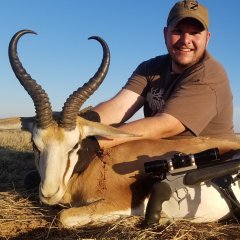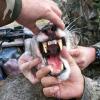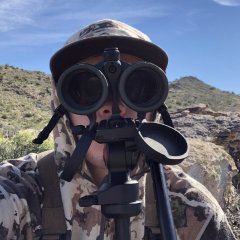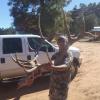-
Content Count
6,461 -
Joined
-
Last visited
-
Days Won
68
About Non-Typical Solutions
-
Rank
Premier Member
- Birthday 04/12/1960
Contact Methods
-
Website URL
http://
-
ICQ
0
Profile Information
-
Gender
Male
Recent Profile Visitors
27,490 profile views
-
Out in the hills hunting, right unit for the tag I have and I encounter G&F unit officer! He asks for my hunting license and tag information! I produce all documents! Everything is good! Does the officer have the authority to request a search of my backpack? Remember, hypothetical!
-

Another first for Levi
Non-Typical Solutions replied to firstcoueswas80's topic in Small Game, Upland Bird, and Waterfowl Hunting
That sounds like a lot of fun!!! Way to get out there hunting!!! -
My wife taught 5th grade for many years and one of her projects she used science was digging through owl poop! I was facinated by what those kids found in the owl pellets!!!
-
Plus BB season 😂
-
Happy turkey day and happy hunting!
-
Is this accurate?🙃
-
He just won't stop running....fun to watch and teams have shut him down and then all the sudden there he goes again...... I miss the rivalries of years past but it will be fun to watch them tonight when temps drop to 40 degrees!
-
If we can't figure out how to pass the ball better it could be a rough night! I'm not sure if our QB has completed a pass in like..........3 games. He is a tough kid though and fun to watch. I thought we played sloppy last weekend against Eastmark but we won 35-0!!!
-
The other option is no rain and continued drought, to think anything otherwise would be...................................... Would a heavy snowpack help out more? Absolutely but to think these rains are not a God send, I am lost for words. Arizona is so unique as many things do continue to grow and have nutritional value due to the fact that we just don't have the harsh winters statewide like other parts of the world. Take a drive from Heber to Payson and look at all the dead trees..........due to lack of moisture! Keep the moisture coming rain or snow, we need it all.
-
-
Loving these slow moving rain storms hitting the White Mountains right now. I gotta admitt, I haven't spent as much time as normal in the Alpine/27/1 units as the past but the little time we spent this summer and fall I saw more mature muley bucks(mature being not forks/spikes) than I have seen in a long time. Switch gears to 36C and a whitetail hunt with family. We had two tags for deer and one lion tag in the group. Both deer hunters tagged out with very decent bucks while the lion tag was 3 miles away from the lion that got glassed up bedded down. Found a huge covey of quail in one of the washes we walked through! All tanks had water and lots of deer! I had never been to this unit and enjoyed the terrain and amount of wildlife sign that was observed!
-
Grandkids are legal wreckers............and worth every minute. Heck of a nice buck!!!
-
Heck of a story and what hunting dreams are made of....congratulations...........
-

Sometimes hunting is easy
Non-Typical Solutions replied to idgaf's topic in Muzzleloader hunting for Coues Deer
I'm always amazed those dang little ghost can be found sometimes and then all the sudden there they are.....or aren't......nice buck, congratulations!!!










